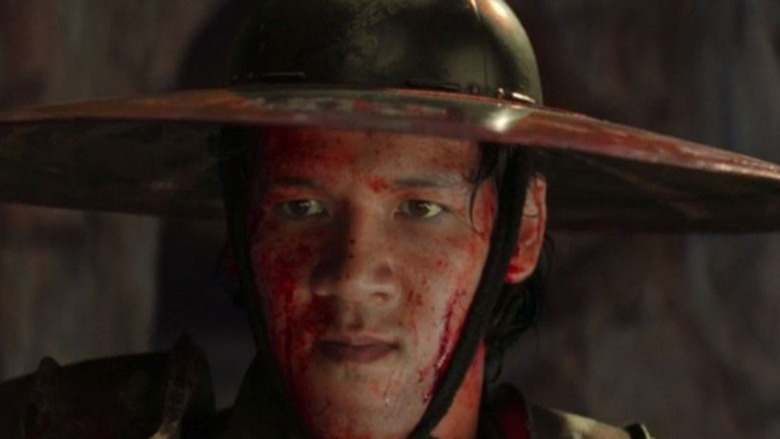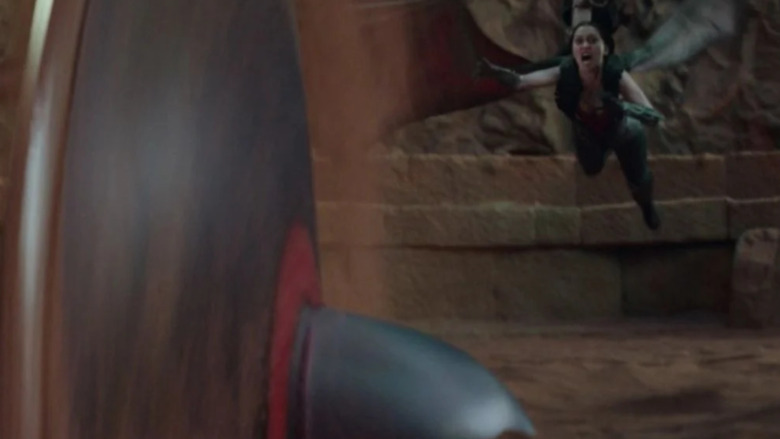How Mortal Kombat Achieved This Stunning Fatality
Simon McQuaid's 2021 "Mortal Kombat" movie may not be in consideration for many of next year's Academy Awards. With a movie like "Mortal Kombat," that isn't the point. Since it's based on one of the most iconic video game series of all time, all it really has to do is appeal to a built-in fanbase. And based on that criteria, it's a hit. While its critics' score on Rotten Tomatoes is a currently a middling 55%, its audience score sits at much more robust 87%.
And really it shouldn't be too difficult to make a "Mortal Kombat" movie. Yes, McQuaid and company did make several creative choices that departed from the original games, even overhauling many of the characters. But they also included the one ingredient that's essential for any "Mortal Kombat" adaptation: cartoonish violence and gore.
One scene in particular made "Mortal Kombat" fans happy: the fight between Kung Lao and Nitara, which ends with Kung Lao's signature finishing move pulled straight from the games. Using his iconic sharp-brimmed hat as a spinning saw blade, Kung Lao throws Nitara at it head-first, splitting her down the middle.
It's a shocking moment that looks like it could only have been created with the assistance of CGI. But star Max Huang recently shared how the scene was made, and it involved a lot less computer wizardry than you might think.
Kung Lao's finishing move was so realistic, this was the only frame we could show you
In an interview with Cinema Blend, Kung Lao actor Max Huang said the gory fatality was mainly created with practical effects. "All the blood you see, that is all real," Huang said. "I can't give away too much, but, when we shot that fatality, it was coming at me and it was a mess."
The filmmakers did later add CGI finishing touches to make the scene feel even more viscerally real, but the practical effects were already realistic enough to create a strong reaction among the crew. "It was certainly gratuitous to say the least," Huang said. "I think the finished product ended up looking really great. I think a lot of people felt sick, on set watching it."
That fits with what Sub-Zero actor Lewis Tan told Cinema Blend about his experience filming "Mortal Kombat," too: "Let me just say this, there were some days on set that I felt sick. I'm not kidding. They did not ... They did not hold back."
If your goal is to create a movie that makes the audience lose its lunch, it's a great sign when your actors can barely look at your props without feeling nauseated. Hopefully, McQuaid and his team will explain more about how exactly they pulled it off soon.

